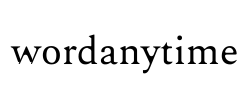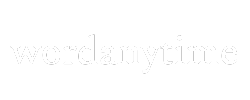Distractions are often considered the enemy of productivity. Your phone lights up, social media pulls you in, and endless emails diminish your focus. Many people view distraction as a weakness.
Here’s the truth: distraction can actually be transformed into a hidden strength. When managed correctly, it becomes a powerful tool for sparking creativity, relieving stress, and enhancing problem-solving.
Consider this: some of the greatest breakthroughs occur not when we force ourselves to focus, but when we allow our minds to wander.
Intentional breaks and mental shifts can enhance memory, sharpen decision-making skills, and foster innovative ideas, according to studies. By learning how to use distraction with purpose, you can turn what once felt like wasted time into a strategy for growth and success.
As philosopher Blaise Pascal once said,
All of humanity’s problems stem from man’s inability to sit quietly in a room alone.
The challenge is not distraction itself, but how we choose to engage with it. This article will show you how to harness the power of distraction and use it to your advantage—so your biggest weakness becomes your greatest strength
The APA report on mind wandering explains how letting your mind drift can boost problem-solving, creativity, and even shape life purpose.What Is Distraction?
Distraction happens when something pulls your attention away from what you’re doing. It’s natural. Your brain is wired to notice new things. This helped our ancestors survive dangerous situations.
Dr. Adam Gazzaley, a neuroscientist at UC San Francisco, explains it this way: “Our brains evolved to be distractible. This helped us stay alert to threats and opportunities in our environment.”
But here’s the thing. Not all distractions are created equal. Some hurt your productivity. Others can help you think better.
There are two types of distractions:
- Destructive distractions—these waste your time and energy
- Constructive distractions—these refresh your mind and spark new ideas
The difference? You choose constructive distractions on purpose. You let destructive ones control you.

Distraction Benefits: The Hidden Advantages of Strategic Mind-Wandering
1. How to Stay Focused by Embracing Creativity Boost?
Your best ideas often emerge when you’re not trying hard. This often happens in the shower, during walks, or while doing dishes.
Scientists call this the “incubation effect.” Your unconscious mind keeps working on problems even when you’re distracted.
Research from UC Santa Barbara found something amazing. People who did simple, boring tasks after learning something new performed better on creative tests. The distraction helped their brains process information in new ways.
The lesson? Sometimes you need to stop thinking so hard. Let your mind wander. Great ideas will follow.
Distraction can actually spark innovation and fresh ideas when managed wisely. Interested in mastering the flip-side of distraction? Check out our detailed article on Focus: How This Power Word Can Make You Better to learn strategies for honing your attention.2. Stress Relief Strategies: How Distractions Reduce Burnout
Constant focus is exhausting. Your brain needs breaks. Strategic distractions give your mind time to rest and recharge.
Dr. Mary Helen Immordino-Yang from USC studies how the brain works during rest. She found that “downtime is not downtime for the brain.” Your mind uses these moments to organize memories and plan for the future.
Think of distraction as a mental vacation. Short breaks help you come back stronger.
3. Productivity Hacks: How Mind-Wandering Improves Problem-Solving
Have you ever noticed how solutions come to you when you stop looking for them? This isn’t a coincidence. It’s science.
Distraction can be helpful when faced with a challenging problem. It lets different parts of your brain work together. New connections form. Fresh perspectives emerge.
A study in Psychological Science proved this. People who took breaks and let their minds wander solved 41% more problems than those who kept working.
The Psychological Science article “The Benefits of Being Distracted” explains how distractions can improve learning by allowing absorption of peripheral information and sparking creative ideas.4. Focus and Concentration Tips: Building Mental Flexibility
Life throws curveballs. The ability to switch between tasks quickly is valuable. This skill is called cognitive flexibility.
Controlled distraction training can improve this ability. You learn to shift your attention smoothly. You become better at handling unexpected changes.
Athletes use this technique. They practice focusing despite distractions. This prepares them for noisy crowds and pressure situations.

The Dark Side: When Distractions Impact Productivity
Not all distractions help you. Some steal your time and energy. These are the ones you need to avoid.
Digital Distractions: The Attention Thieves
Your smartphone is designed to distract you. Apps use bright colors, sounds, and notifications. They want to grab your attention and keep it.
The average person checks their phone 96 times per day. That’s once every 10 minutes during waking hours. Each interruption costs you focus and mental energy.
Social media can pose significant risks. It triggers your brain’s reward system. You get small hits of dopamine from likes and comments. This creates an addiction cycle.
Dr. Larry Rosen, professor emeritus at California State University, warns, “These digital interruptions fragment our attention and make deep work nearly impossible.”
Multitasking: The Productivity Killer
Many people think multitasking makes them more productive. Research proves the opposite is true.
When you switch between tasks, your brain needs time to refocus. This is called “switching cost.” It can reduce your productivity by up to 40%.
What feels like multitasking is actually rapid task-switching. Your brain jumps back and forth between activities. Each jump costs you time and mental energy.
Information Overload
We consume 34 GB of information daily. That’s enough to crash a laptop from the 1990s. Our brains weren’t built for this much input.
Too much information creates decision fatigue. You become overwhelmed and make poor choices. Your ability to focus suffers.
The solution isn’t more information. It’s better filtering.
How to Master the Art of Strategic Distraction
The goal isn’t to eliminate all distractions. That’s impossible and unnecessary. Instead, learn to choose your distractions wisely.
The Power of Planned Breaks
Schedule your distractions, like appointments. This sounds backwards, but it works.
Try the 90-minute rule: Work in focused 90-minute sessions, followed by a 15 to 20-minute break. During breaks, engage in a completely different activity.
Good break activities include:
- Taking a walk outside
- Listening to music
- Doing light exercise
- Having a healthy snack
- Chatting with a friend
Avoid digital activities during breaks. Your brain needs a real rest from screens.
Create Distraction-Free Zones
Designate specific times and places for focused work. Turn off notifications. Put your phone in another room. Use website blockers if needed.
Your bedroom should be phone-free. This improves sleep quality. Better sleep leads to better focus during the day.
Use the Two-Minute Rule
When faced with a distraction that demands less than two minutes of your time, seize the moment and act immediately. If additional time is needed, make a note of it for future reference.
By addressing small tasks promptly, we protect ourselves from the overwhelming grip of mental distractions that can grow if left unattended. This will help you conserve your mental energy by freeing you from having to remember those tasks.
Practice Mindful Distraction
Observe what distracts you and when it happens. Maintain a distraction log for one week and identify patterns.
Ask yourself:
- When am I most easily distracted?
- What types of distractions affect me most?
- Which distractions actually help me?
- Which ones hurt my productivity?
This awareness allows you to make better choices about when to give in to distractions and when to resist them.

Different Types of Beneficial Distractions
Physical Movement
Exercise serves as an excellent distraction for your brain. It increases blood flow and releases beneficial chemicals, such as BDNF (Brain-Derived Neurotrophic Factor).
A 10-minute walk can boost your creativity by 60%. The movement helps new ideas flow.
Nature Exposure
Spending time in nature can help reset your attention. Research from Japan has shown that “forest bathing”—which involves spending time among trees—can reduce stress hormones by 50%.
Even simply looking at pictures of nature can be beneficial. Consider placing a plant on your desk or hanging nature photos in your workspace to create a calming environment.
Creative Activities
Engaging in activities like drawing, playing music, or crafting stimulates different areas of your brain. These creative pursuits allow your analytical mind to take a break while still keeping you mentally active.
You don’t have to excel at these activities; the aim is to refresh your mind, not to achieve artistic perfection.
Social Connection
Talking with friends or family can reset your mood and energy. Social connection releases oxytocin, which reduces stress.
Keep conversations positive and brief during work hours, and save deep discussions for after work.

The Science Behind Distraction and Focus
Your Brain’s Attention Networks
Your brain has two attention systems:
- Focused attention network—handles concentrated work
- Default mode network—active during rest and mind-wandering
Both systems are important. You need focused attention for difficult tasks, and you need the default mode for creativity and mental restoration.
Problems arise when these systems fight each other. This happens when you’re trying to focus, but your mind keeps wandering with worries or distractions.
The Attention Restoration Theory
Environmental psychologists Rachel and Stephen Kaplan developed this theory. It explains why nature is so good at restoring mental energy.
Natural environments have four key features:
- Being away—creates both Physical and mental distance from daily demands
- Fascination—effortless attention to interesting things
- Extent—Rich environments that engage multiple senses
- Compatibility—Alignment with your personal interests
You can apply these principles to design better breaks and work environments.
Building Your Distraction Management Skills
Start Small
Don’t attempt to revolutionize your entire relationship with distraction overnight. Select one small change and dedicate yourself to it for a week.
Start by putting your phone in a drawer during one focused work session each day.
Use the Technology Wisely
Technology can be both a source of distraction and a tool for managing it. Use apps that help you focus:
- Forest—Gamifies staying off your phone
- Freedom—Blocks distracting websites and apps
- Brain.fm—Provides focus-enhancing background music
Set up your digital environment to support better habits. Turn off non-essential notifications. Use “Do Not Disturb” modes during focused work.
Create Rituals
Establish consistent routines that tell your brain when to focus and when to let go of distractions.
Before starting focused work:
- Clear your desk
- Set a timer
- Take three deep breaths
- Review your goals for the session
After finishing:
- Note what you accomplished
- Stretch your body
- Choose your next activity mindfully
Practice Saying No
Every acceptance of a distraction means rejecting something else. Learn to feel at ease saying no to nonessential requests during focused work time.
“I’d love to help, but I’m in a focused work block until 3 PM. Can we talk then?”
Real-World Applications
For Students
Use strategic distraction to improve your studying:
- Take breaks every 25-30 minutes (try the Pomodoro Technique)
- Study different subjects in different locations
- Use background music without lyrics for some tasks
- Exercise between study sessions
For Professionals
Apply distraction management in your career:
- Block calendar time for deep work
- Check email only at scheduled times
- Use the “two-minute rule” for small tasks
- Take walking meetings when possible
For Parents
Help your children develop healthy distraction habits:
- Create phone-free family time
- Encourage unstructured play
- Limit screen time before bed
- Model good distraction management for yourself.
For Entrepreneurs
Use distraction strategically to boost innovation:
- Schedule “thinking time” with no agenda
- Change work locations regularly
- Network with people outside your industry
- Take breaks to pursue hobbies

Common Mistakes to Avoid
Mistake 1: Fighting All Distractions
Trying to eliminate every distraction is exhausting and counterproductive. Your brain needs variety and rest.
Instead: Choose your distractions wisely. Plan them into your schedule.
Mistake 2: Confusing Busy with Productive
Being constantly busy doesn’t mean you’re being productive. Sometimes the most productive thing you can do is take a break.
Instead: Focus on results, not hours worked.
Mistake 3: Using Digital Devices for Breaks
Switching from working on a computer to checking social media on your phone isn’t really a break. Your brain is still processing digital information.
Instead: Choose analog activities for breaks. Walk, stretch, or look out a window.
Mistake 4: Ignoring Your Natural Rhythms
Everyone has times when they focus better and times when they’re naturally more distractible. Fighting these rhythms makes life harder.
Instead: Schedule demanding work during your peak focus hours. Use naturally low-focus times for easier tasks or breaks.
The Future of Distraction Management
As technology advances, managing distraction becomes both easier and harder. New tools help us focus, but new distractions emerge constantly.
The key is developing timeless skills:
- Self-awareness
- Intentional choice-making
- Flexibility
- Mindfulness
These skills will empower you, regardless of the new technologies that emerge.
The influence of artificial intelligence is poised to expand significantly in the realm of managing distractions. Imagine a world where your AI assistant understands your unique focus patterns, effortlessly shielding you from distractions during your most productive hours. Embrace this powerful ally in your quest for excellence.
But technology is just a tool. The real power lies in understanding yourself and making conscious choices about where you direct your attention.
Measuring Your Progress
Track your distraction management with simple metrics:
Focus Quality Score
Rate your focus during work sessions on a scale of 1 to 10. Identify which strategies lead to higher scores.
Distraction Log
Maintain a brief log of your distractions and their causes. Analyze for patterns over time.
Energy Levels
Pay attention to how different types of breaks influence your energy levels. Some activities might recharge you more effectively than others.
Creative Output
Take a moment to acknowledge when you have your best ideas. Many people find that strategic distractions boost their creative thinking.
Overall Satisfaction
Be mindful of your satisfaction with work and life. Effective distraction management can enhance your overall happiness.
Building Long-Term Habits
Changing your relationship with distraction takes time. Be patient with yourself as you develop new habits.
Weeks 1-2: Focus on your awareness. Observe your current patterns of distraction without attempting to change them.
Weeks 3-4: Implement one small change. Keep your phone in a different room for one work session each day.
Weeks 5-6: Add scheduled breaks to your routine. Experiment with different break activities.
During Weeks 7-8: Create distraction-free zones in your home or office.
For Weeks 9-10: Practice choosing your distractions consciously instead of letting them choose you.
Weeks 11-12: Refine your system based on what you’ve learned about yourself.
Remember: progress isn’t always linear. Some days will be better than others. The goal is gradual improvement over time.
10 Actionable Steps to Master Distraction
Are you ready to transform distraction from your enemy into your ally? Start with these proven strategies:
1. Audit Your Current Distractions
Spend one day tracking every time you get distracted. Note what caused it and how long it lasted. This awareness is the first step toward change.
2. Create a Phone-Free Hour
Avoid using your phone altogether, and as a result, you’ll have more time for your most important work. Notice how different it feels.
3. Schedule Micro-Breaks
Set a timer to remind you to take a 2- to 3-minute break every 30 minutes. Stand up, stretch, or look out a window. These tiny breaks add up to big improvements.
4. Design Your Ideal Break
Try out different break activities for a week. Experiment with walking, listening to music, doing jumping jacks, or stepping outside to discover which activity refreshes you the most.
5. Use the 90-Minute Rule
Work in 90-minute focused blocks, then take a 15-20 minute break. This matches your brain’s natural attention cycles.
6. Practice Single-Tasking
For one week, commit to doing only one thing at a time. When you eat, just eat. When you work, just work. Notice how this affects your focus and enjoyment.
7. Create Environmental Cues
Set up your workspace to support focus. Remove visual distractions. Add a plant or nature photo. Use these cues to signal “focus time” to your brain.
8. Implement the Two-Minute Rule
When something distracts you, ask, “Will this take less than two minutes?” If yes, do it immediately. If not, write it down for later. This prevents mental clutter.
9. Plan Your Distractions
Allocate specific time for social media, email, or news. Stick to these scheduled times instead of checking randomly throughout the day.
10. Start a Distraction Journal
For one week, write down when you feel most focused and when you feel most scattered. Observe these patterns and utilize this insight to optimize your schedule.
Conclusion: Your Distraction Revolution Starts Now
Distraction doesn’t have to be your enemy. When used wisely, it becomes a powerful tool for creativity, productivity, and well-being.
The world will always be full of things competing for your attention. You can’t control all of them, but you can control your response. You can choose which distractions to welcome and which to resist.
This isn’t about perfect focus all the time. It’s about intentional attention management. It’s about making conscious choices instead of letting distractions decide for you.
Your brain is incredibly adaptable. The habits you build today will shape how you think and work tomorrow. Every time you choose a constructive distraction over a destructive one, you’re training your mind to serve you better.
Start small. Pick one strategy from this article and try it for a week. Notice what changes. Build on what works. Adjust what doesn’t.
Remember that the goal is not to eliminate all distractions but to master your attention. Once you do this, you’ll see that distraction can become a strength instead of a weakness.
Your focused, creative, and fulfilling life is waiting. The only question is: what will you choose to focus on first?
Transform your relationship with distraction today. Your future self will thank you.
Further Reading
- The Greater Good Science Center article “How Mind-Wandering May Be Good For You” offers research-backed insights on how a wandering mind can boost creativity, mood, goal clarity, and productivity.
- The Verywell Mind article “5 Positive Effects of Daydreaming” outlines practical benefits like stress relief, problem-solving, and mental rejuvenation.
- The Duke CE Insights piece “The Unlikely Benefits of Distraction” explains why scheduling “unfocus time” can enhance creativity, productivity, and self-connection.
- The TIME article on “Niksen” explores the Dutch concept of doing nothing and how it reduces anxiety and supports creative breakthroughs.










